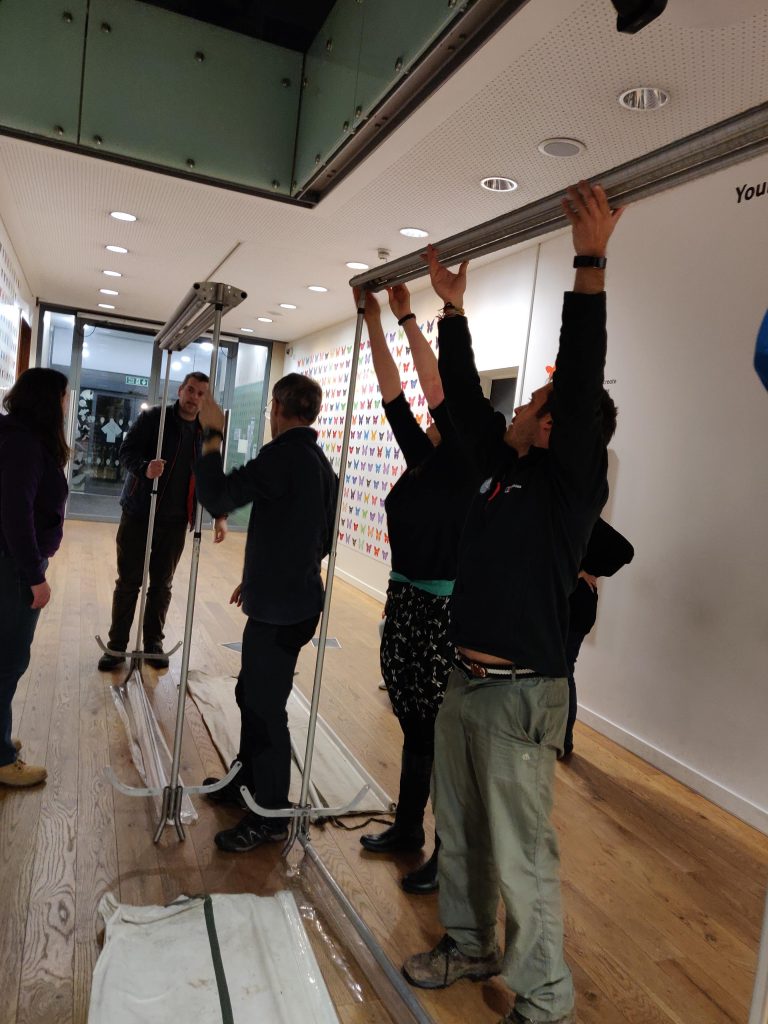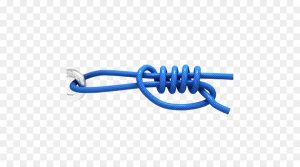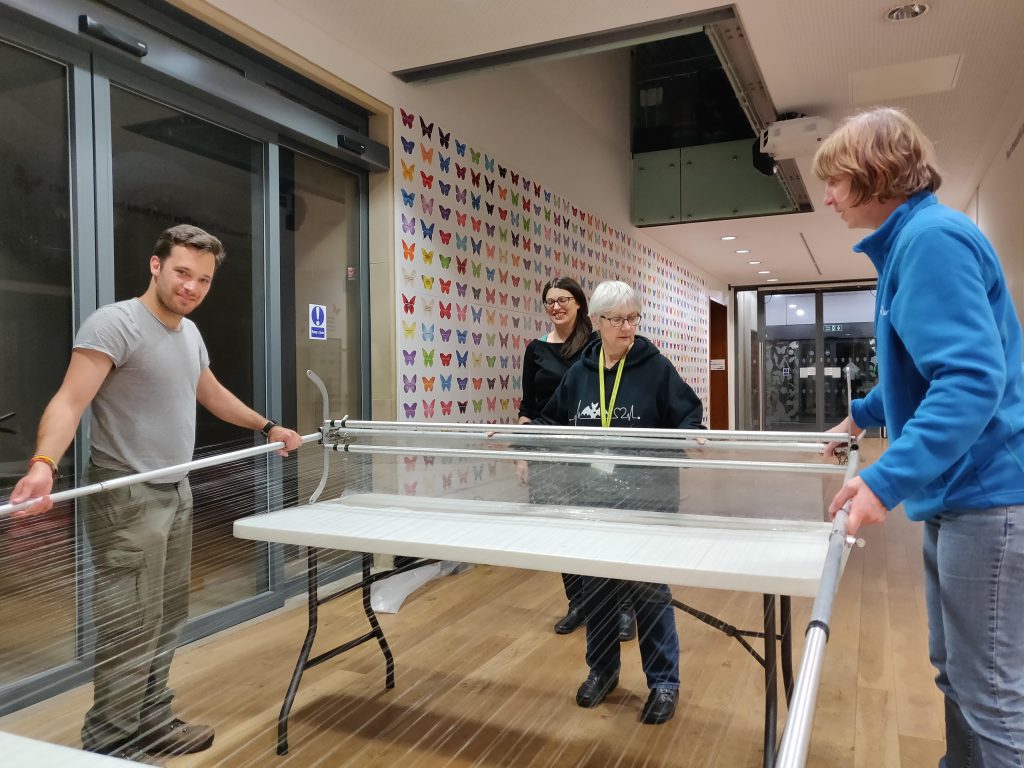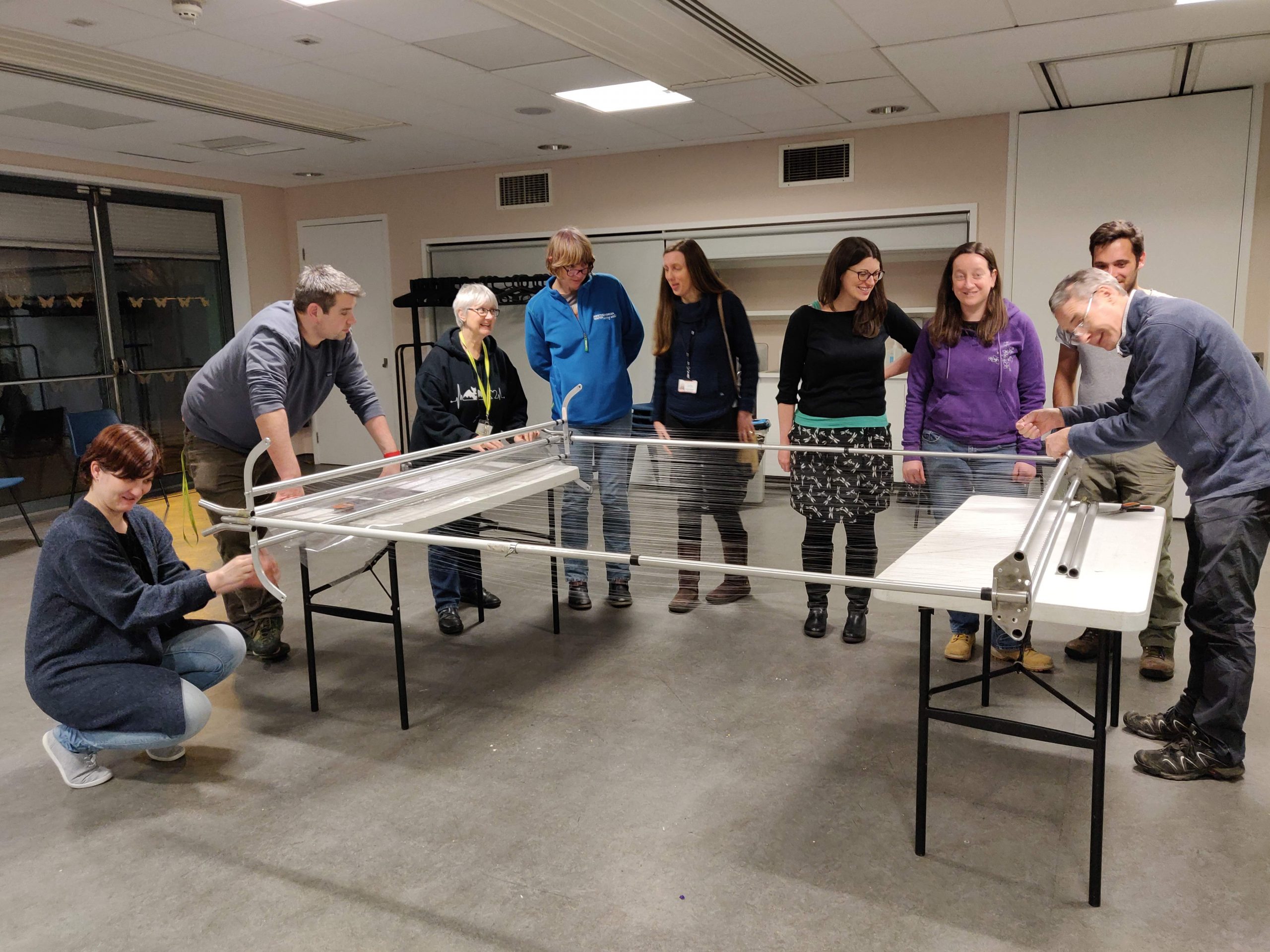
So, what is a harp trap?
Well, it is a metal frame, with vertical lines of fishing wire strung between the lower and upper poles, at about 1cm gaps.
The idea being that if you set the trap up on a ride, or a gap between two trees, the fishing line will be too thin for the bat’s sonar to detect, and the bat will fly in to it, falling in to the fabric pocket at the bottom, unharmed.
The bats can then be retrieved, processed (weighed, measures, ringed, radio tagged, depending on the mission); then released back in to the wild.
But as we know, fishing line stretches and breaks from time to time; therefore it has to be replaced. What better way to the required work, than at a social event, with tea, biscuits and good humour?
Initially we all met upstairs at the museum, where Hazel handed out some leaflets on tying a blood knot (very important) and other information about harp traps. We then all traipsed downstairs to the hallway, to set the traps up.


By the time we finished the knotting and restringing it was about 9pm, time for home or the pub.
The traps were disassembled, rolling the lines around the horizontal bars, so that when they are unwound at the start of the season in the field, they should all play nicely, like a musician’s harp – with no missing or lose strings.
Well we can all hope anyway!
Share this post!

